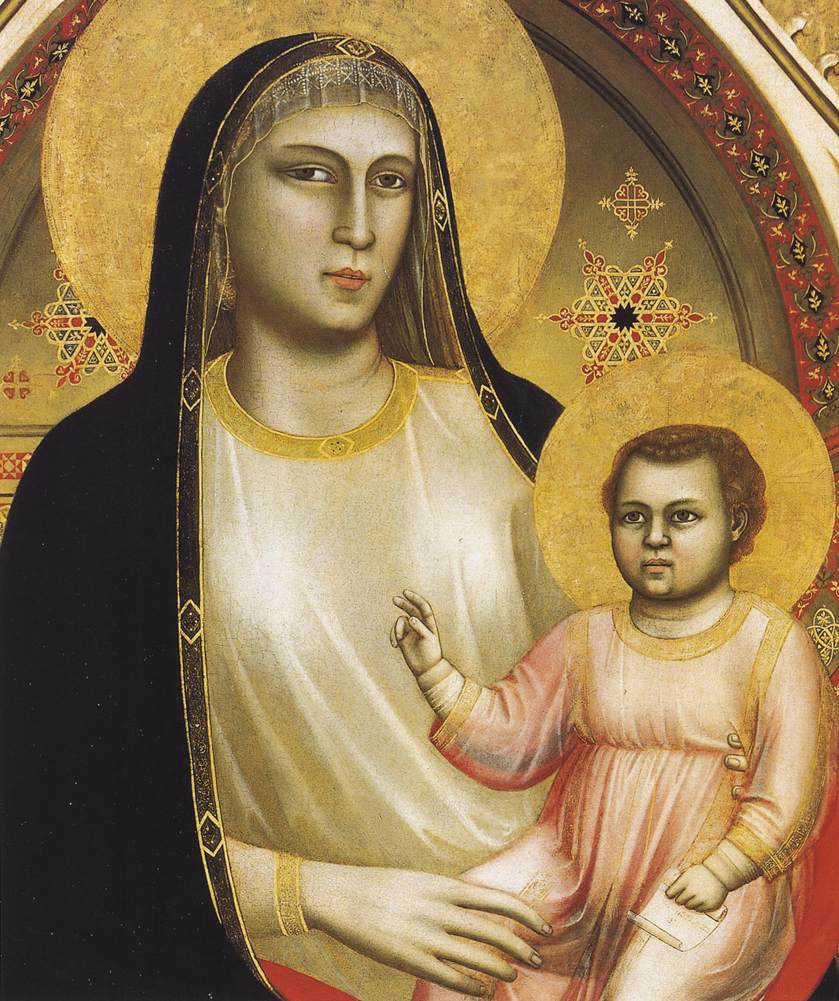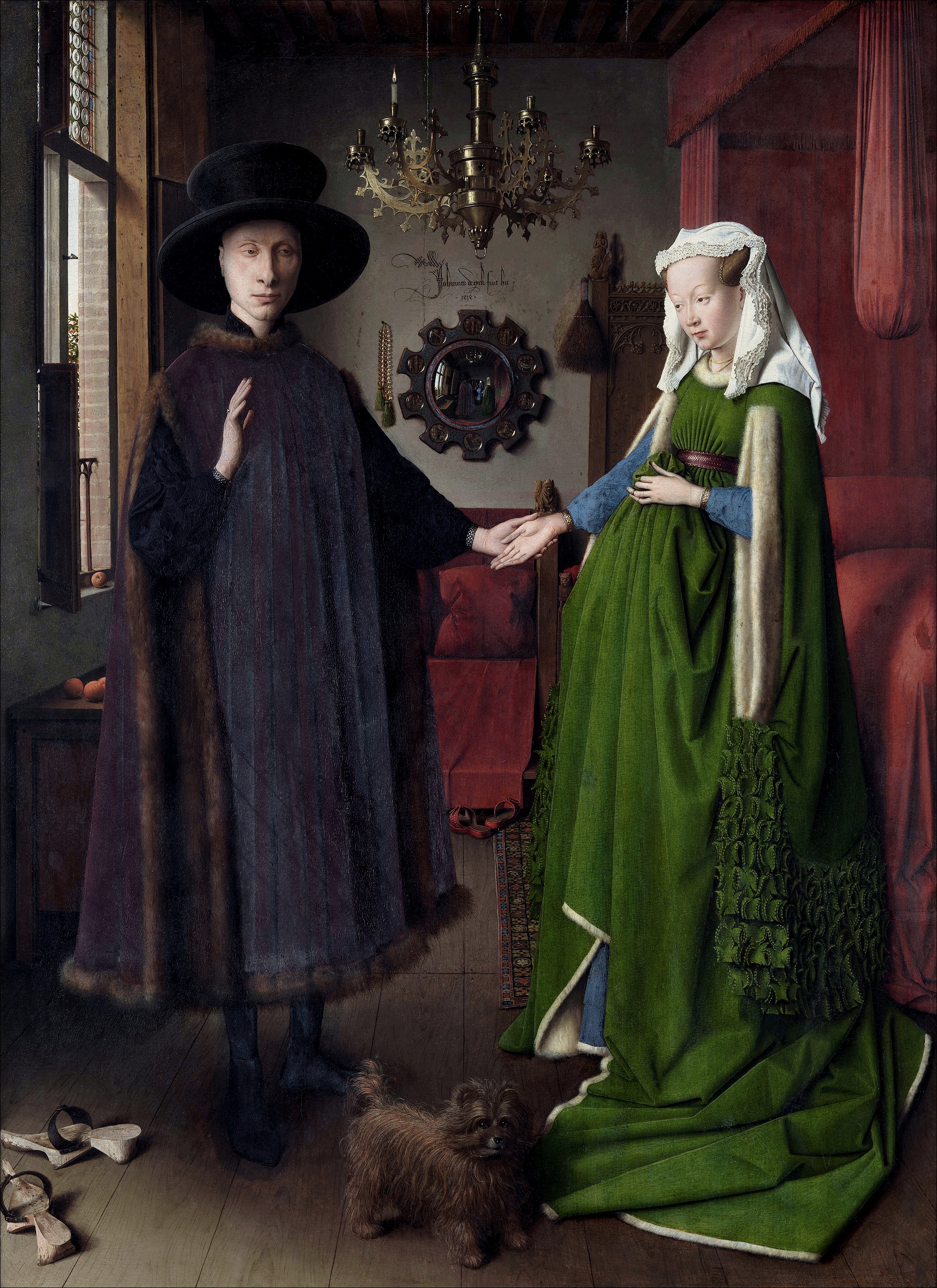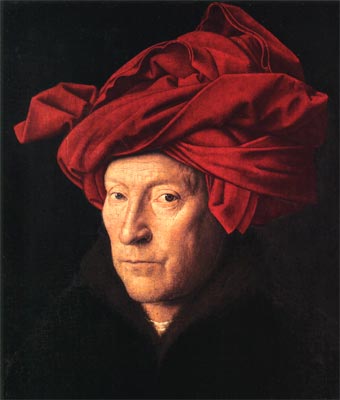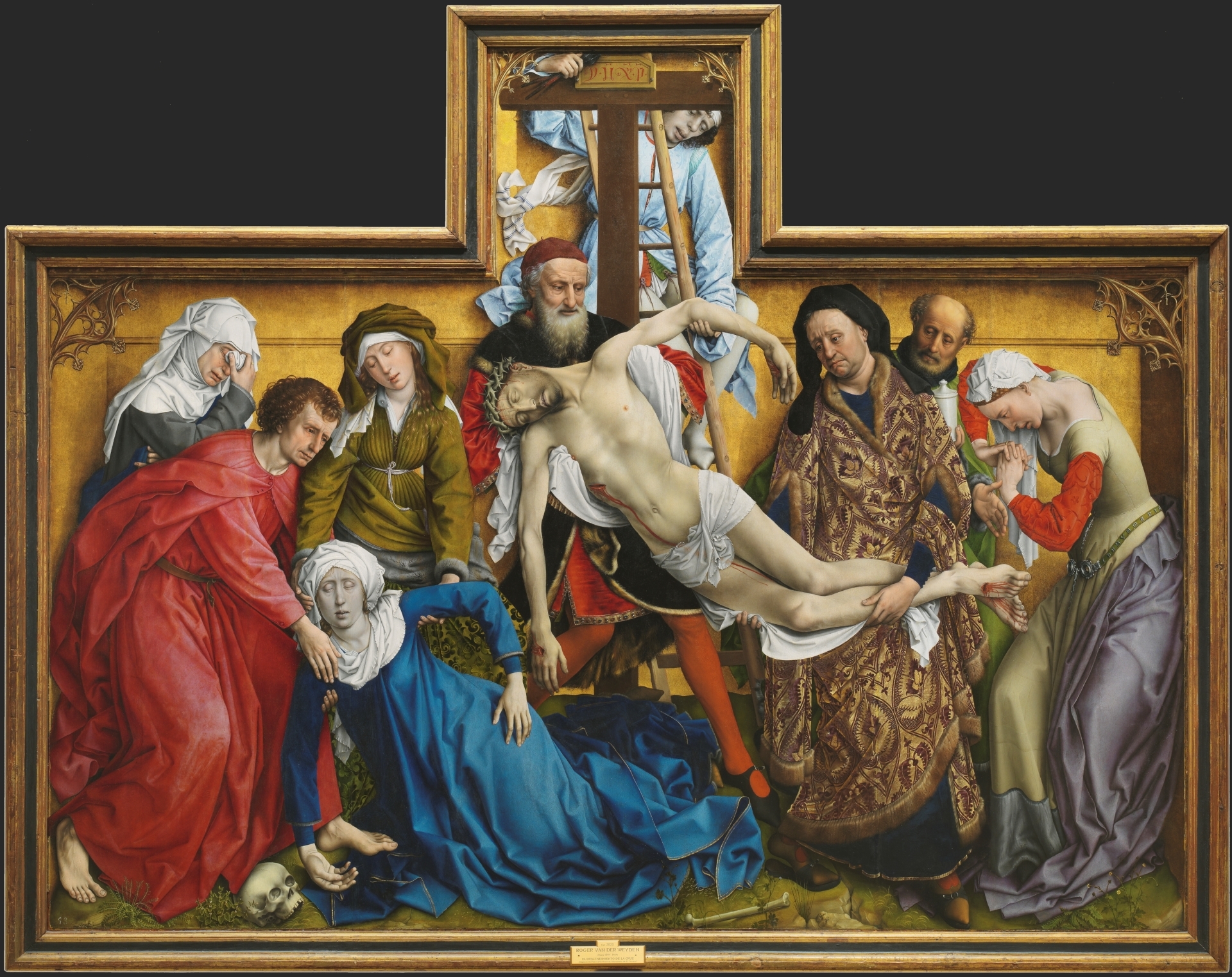The most important Gothic painters were:
a) Giotto
Among the most important Gothic painters, Giotto plays an important role due to his great talent, ingenuity and spirit of innovation. Human emotions are predominant in his work intensified by the Franciscan influence.

Giotto developed the concept of ‘pictorial space’ in frescoes. Pictorial space meant an area of three-dimensional feeling that extends in depth behind the painted surface. His most important work was the decoration of the chapel for the Scrovegni family in Padua. Those frescoes made on the walls and vault consist of numerous boxes dedicated to biblical themes and presented in an innovative, realistic, and emotive way.

b) Duccio Di Buoninsegna
Duccio Di Buoninsegna stood out for the surprising use of color in his works, the most important being The Maesta. The Maesta was completed in 1311. This work presents a complex composition, simple to understand thanks to the expresions and gestures of the characters. Virgin Mary is represented in a larger size with a majestic pose.

c) The Limbourg brothers

They were know as ones of the most relevant illustrators of manuscripts.
They used rich colors in their miniatures characterized by the brightness and intensity of the colors. Another characteristic is the attention to detail while representing the surrounding reality. They also produced larger paintings. Their technique was very innovative as they represented the perspective and the tridimensional space with great precision.
Their most prominent work was “The rich hours of Jean de Berry” which contains beautiful scenes.

d) Jan Van Eyck

Jan Van Eyck portrayed the bourgeoisie of the time and his works are characterized by the detail of faces, clothes and hidden messages in the representation of objects or clues in the scenes that convey a great conceptual value. This idea of hidden messages continued in the Renaissance. His most important work was The Arnolfini couple which presents a bourgeois married couple in rich and colorful clothes. Jan van Eyck painted himself in the mirror besides the other wedding guests. Jan van Eyck mixed paints using oil and egg, which was a very innovative method.

e) Roger van der Weyden

This Flemish painter work corresponds with the “primitive” movement style. He performed his most outstanding work around the year 1435. “The descent” painted with oil on wood correspond with the late Gothic. He performed less intellectualized and simpler models to be better understood by viewers.
He intensifies the emotional representation of its characters and achieves a compositional rhythm in the scenes. This work was made for a triptych but remains only the central panel,

f) Jean Fouquet

Jean Fouquet was a French miniaturist and painter. His most prominent work is Madonna and Child from 1450 which breaks the old canons when representing Virgin Mary. The Virgin created by Fouquet is showing a bare breasted and a late Gothic attire. The deep red color in the figures surrounding the Virgin and Child is also very unconventional and symbolizes the difference between the good and the evil.
![[madonna.jpg]](https://2travellingacrosstime.files.wordpress.com/2021/08/395b3-madonna.jpg)
g) Geronimo Bosch

Geronimo Bosch had an unconventional and unique style His most famous work was the almost dream-like representation of “The garden of earthly delights”. Bosch brings to us an apparent mad composition that stuns the spectators with the complexity of its arrangement. Hundreds of orgy carefree characters in this paint are illustrated in a scary vision of this biblical passage. Moralizing elements converge in an obvious bizarre composition that shows vices, evil, perversity, betrayal, lust and gluttony among other sins.
The symbolism of the characters, the representation of their actions and the presence of numerous animals in various micro- scenarios within the composition contribute to the perception of it as a very unusual but colorful nightmare. The use of color supports the intention of establishing several planes in the composition. The gestures of the characters; most of them naked, emphasize the drama of the actions.

h) Hans Holbein the Elder

Hans Holbein “the Elder” is a German gothic painter of the 15th century. Holbein painted richly colored religious works. His latest paintings showed the transition from he International Gothic to the Renaissance style. In addition to the altar paintings, Holbein also designed church windows and woodcuts. Some of his prints survived. He also made interesting portraits. His son, Hans Holbein the Younger, was an excellent portrait painter and engraver.

WORKSHEETS:
